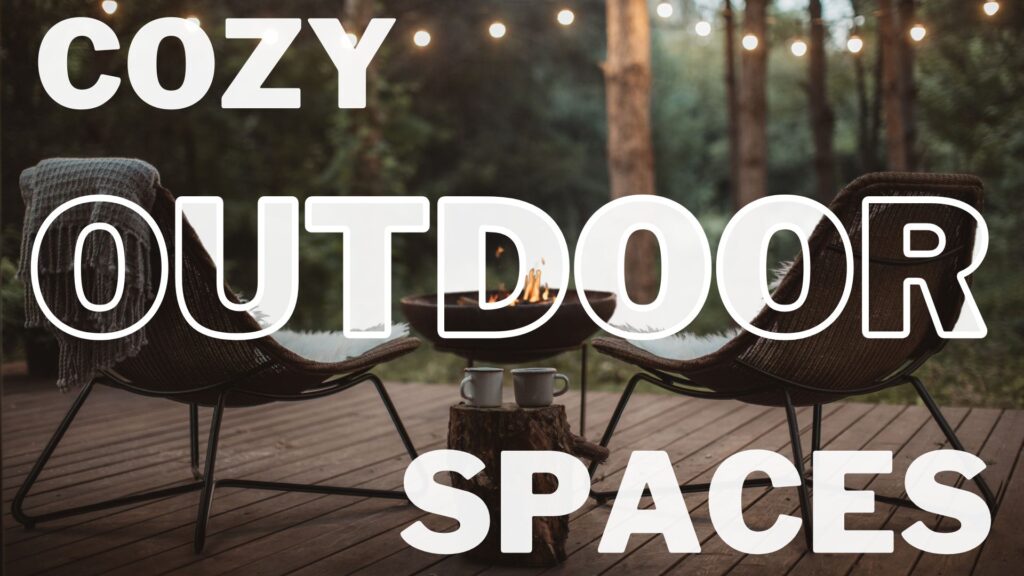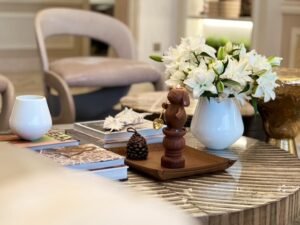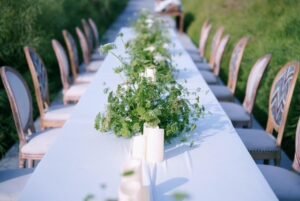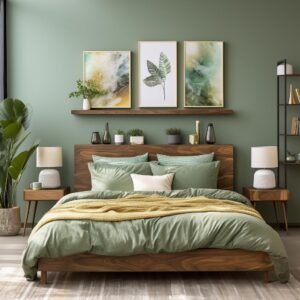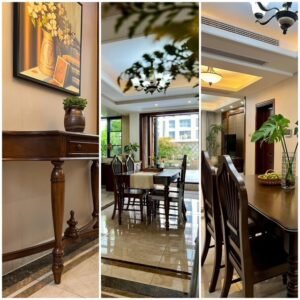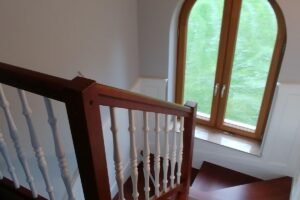Table of Contents
In today’s increasingly interconnected society, where the search for the feeling of emerging as the magic ingredient that can turn any ordinary renter’s flat into a home. Some spaces are for leisure, like a secluded balcony for that morning coffee or a beautiful backyard to entertain friends. These backyard escapes provide tenants with their slice of nature, which is comfortable and functional. By adding thoughtful privacy elements like stylish fencing, landlords can create small, secure environments that resonate with tenants seeking private, relaxed lifestyles. Consider every square foot of the outdoor area and allow the rental buildings to be more than just living spaces; let them be havens.
They’re a game-changer for tenant satisfaction and property appeal. From privacy-enhancing fences to all-season setups, you’ll learn how to transform any space into a cozy retreat.
Start creating inviting outdoor areas that tenants won’t want to leave.
Why Outdoor Spaces Matter for Rentals
This is a core strategy because outdoor spaces have become standard in rentals due to the considerable boost in the quality of life they offer. These areas are very personal to tenets and provide privacy, allowing them to enjoy their free time surrounded by nature. From a small area or balcony to a large terrace or garden, outdoor spaces complement commercial buildings and increase the floor space of residential units. From these observations, patios serve as part of the indoor living spaces for leisure, dining, and even working from home.
In addition, home-like outdoor spaces provide privacy and comfort that tend to be lacking in the busy renter’s life. Such an option can also have the potential to improve the overall rental experience, making properties more desirable in a given market. Local advertisements showing well-designed yards receive better responses due to social tendencies where tenants first consider comfort before anything else, as well as being closer to nature. These benefits not only enhance the satisfaction level of tenants but also increase the firm’s retention rates, providing additional value for property owners.
Understanding the Space: Evaluating Your Property’s Outdoor Potential
Determining the type of space available is the first crucial step when planning a comfortable and efficient outdoor area for the rental property. Each area, from the small balcony to the large garden and from the enclosed yard to the community courtyard, has its unique characteristics and limitations. For example, small spaces serve most from collapsible furniture like folding chairs and tables. Larger areas can contain more features, such as a kitchenette, a barbeque grill, a fire pit, or a dining area, which offer tenants extra comfort and leisure.
You can build the natural feel to combine with other features, such as trees or shrubs already grown at the compound, to ensure they provide shade and privacy. Also, the overall climate and locale can inform decisions concerning the types of plants or furniture well-suited to the space. You must develop an understanding of the area’s aesthetic structures – hitches like fences or even retaining walls that may affect the shape or other characteristics of the property. When properly analyzing these indicators, landlords can provide a highly appealing outdoor environment that adds value to the physical property.
Designing for Comfort: Furniture and Layout Tips
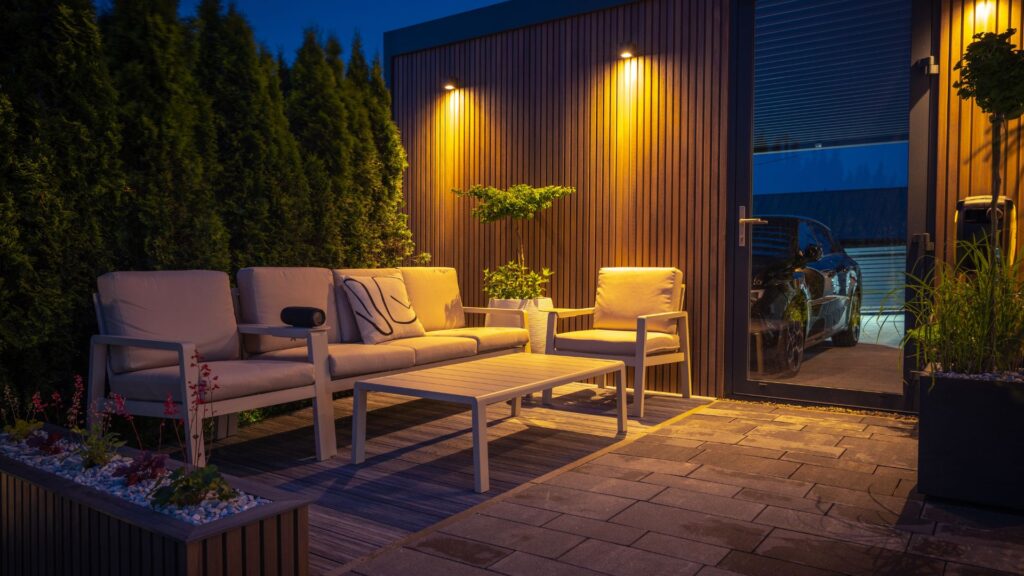
When designing any outdoor space that should be well-liked by the tenants, it is also important to consider comfort. When selecting outdoor furniture, many choices greatly influence how welcoming the area feels and its usefulness. Wood like teak, metals such as aluminum, or synthetic rattan are perfect for outdoor furniture, as they do not degrade due to sunlight, water, or wind exposure. Another aspect of comfort includes problems of hardness and support: loungers, such as outdoor sofas or hammocks, are ideal for promoting relaxation. In such cases, furniture should be multipurpose and portable, such as folding furniture or stacked on top of each other.
The combinatorial layout is just as significant in developing comfort-orientated designs. A good design can help change people’s perception of the place since tenants will be using it. Multiple individual seating arrangements are placed in a circular/semi-circular formation around the four-tiered fireplace or garden area to foster engagement in conversation. Orientation furniture should consider the scenery or block sunlight, and certain times of the day should make the place more comfy and delightful. The movement should always be minimal, structuring how tenants move within the area while fully denying the feeling of enclosure.
However, the office environment personalization also influences comfort. By offering armchairs with flexibility like all other furniture, along with objects like round tables, the tenant has the flexibility to make changes to the environment depending on whether it’s a dining zone, a resting area, or a party space. The creation of such a room will be attractive and best suited for different uses so that it becomes a one-stop solution.
Incorporating Greenery: Plants and Landscaping
Introducing planting as a design element is one of the imposing approaches to transforming the private territory into a comfortable and relaxing area. Apart from aesthetics, plants also have some environmental and psychological effects on the rental properties. Sourcing and laying down plant varieties that are indigenous to the local weather conditions might assist in designing low-maintenance areas while still providing a green feel. Landscapes like nuts and flowers can help reduce the harshest edges of concrete wall floors, adding natural beauty, creativity, and comfort that will encourage the tenants to relax outside of the office space more often.
However, other than aesthetics, greenery can also serve different functions and other purposes. Plants with height, including bamboo or hedges, provide natural protection, giving a sense of security while still making the area look beautiful. Using vertical gardens or hanging plants from beams is ideal for small terraces or balconies where the renters do not wish to give up square meters of usable space to generate greenery. Also, growing plants on the patios, window sills, or in pots lets tenants stay close to nature by growing herbs or flowers, which could go a long way in making tenants happy.
Thus, choosing the plants and arranging the outdoor zones can become useful and comfortable_ additional spaces for tenants that are as attractive as well as necessary as the office interior.
Privacy Solutions: Creating Intimate Spaces
Privacy is an essential factor in creating a privacy-oriented ambience in outdoor spaces, especially in rented buildings where common and open areas are usually incorporated. In such zones, vegetation serves as an effective barrier to separation, providing privacy to residents in exclusive outdoor spaces. Practical barriers include using tall plants, some hedges, or climbing plants arranged on fences or trellises, making the green space less accessible to distant neighbors or passers-by. This approach helps improve privacy even though it adds to the space’s overall aesthetics and comfort for those sitting outdoors.
For additional seclusion, an L-shaped or U-shaped built-in bench, with a small table and shelves for plants, can be built on a small patio or a balcony. In contrast, tall plants, including bamboo or palm, will help create a more intimate setting without occupying a lot of space. Don’t restrict annual or perennial creeper plants such as ivy or jasmine to walls; direct them to crawl up trellises or decorative pergolas. Besides enhancing aesthetics, they also provide privacy. This makes the fulfillment of the privacy feature possible while at the same time constructing beautiful and workable greenery designs that invariably enrich the tenant interface.
As the overall landscaping plan integrates privacy, landlords are able to offer tenants more comfort, allowing them to enjoy their outdoor space better. Regardless of fencing, plants, or other types of screening, the provision of privacy is quickly becoming a key selling point for outdoor spaces and, therefore, increases tenants’ satisfaction levels.
Lighting for Ambiance: Creating Warmth and Atmosphere
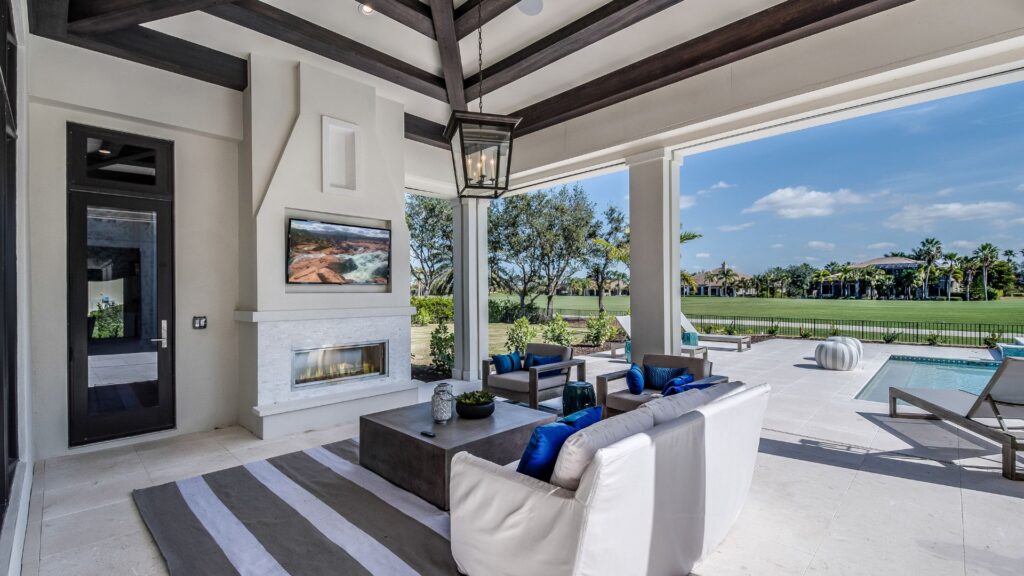
Few realize that lighting can be a crucial player in controlling the ambiance of outdoor environments. The type of lighting that people install in an area can change the atmosphere of that particular space, whether for relaxing in the evening or for hosted parties. Basic temporary lighting, including string lights, is appropriate, and warm light sources like lanterns or solar-powered path lights are sufficient without requiring sophisticated electrical wiring. All these options are ideal for renters mainly because the dividers are relatively easy to install and remove, making the space functional and beautiful.
In large rooms, there is always a possibility of having multiple sorts of lighting installed so as to create an appropriate atmosphere. Hanging luminaries provide general lights, while specific lighting effects like table lamps or spotlights illuminate specific areas like outdoor dining tables or any outstanding features in a garden. Smart lighting, such as dimmers, allows the tenants to change the number of lights according to the ambiance of the place for a movie night or a lively party.
Therefore, the design emphasizes such lighting that makes the overall outdoor area appear warmer and more versatile, which may have a positive impact on the rental appeal of the property.
The Power of Textures: Rugs, Pillows, and Throws
An element of texture, such as soft and colorful cushions, mats, and throws, can go a very long way in improving the aesthetic value of any space and apply to the exterior spaces as well. These soft textures add comfort and a homely feel, making the patio or the deck essentially part of the living room. Indoor/outdoor rugs are particularly good at providing shape to seating zones as decorative elements and providing cushioning wherever you place them. Choose materials that can easily endure unfavorable weather conditions by adapting fabrics suitable for different seasons.
The selection of textiles should also assimilate to the general design concept of outdoor furniture. Unrefreshing tones of brown and white, therefore, bring a calm and cozy mood to the room, while the high energy of vibrant colors and complex patterns does the opposite. Using both woven blankets and plush pillows, for example, also breaks the textural plane of the space, making it richer and far more distinctive.
Textiles also have flexibility. Especially with easily inserted cushions and furniture covers, tenants can change the appearance very frequently, leaving the place fashionable and warm during the year. Such adaptability makes outdoor areas unique and comfortable; people like to spend time there and feel relaxed for a long time.
Multi-Season Use: Making Outdoor Spaces Functional Year-Round
Having an outdoor area year-round can be beneficial and enhance the aesthetics of rental facilities by providing residents with the comfort of enjoying an outside environment at any time. Outdoor lighting fixtures and fireplaces can be considered for colder months when tenants are unable to go outside but still want to use the space. These features help transform cold spaces into warm, comfortable environments, enhancing both their usability and coziness. Coated blankets withstand outdoor conditions, providing comfort. Rugs also bring warmth, allowing you to utilize the area at any time of the year.
Other considerations if the space is to be left changeable with seasons should include features such as retracting awnings, pergolas, or umbrellas. These not only prove useful during scorching summer weeks but also help protect furniture and other accessories from sun bleaching. Except for incidental costs like wear and tear, upkeep is manageable in the long run because weatherproof furniture covers are necessary during season changes but less frequently than you might expect.
If landlords incorporate multi-season elements into the design process, they can provide the tenants with an appropriate outdoor working space during every season. Flexibility is also important because it improves the ability to lease the property, as well as the desirability of the leased premises among tenant populations.
Adding Personality: Decorative Touches to Make the Space Unique
Moving from accessories to private and decorative signs makes a space both functional and unique. Simple additions like wind chimes, pivoting outdoor sculptures, and bird feeders not only look nice but also give the space something more personal. These elements, when used thoughtfully in suitable decor, can bring a feeling of calm and serenity or even ‘fun’ and ‘joviality’ into the area, which is very close to a personal space. For instance, metal wall pieces, along with hanging lanterns, can also fit into this category, giving the home a real and warm look.
Let the tenants of the house adapt the outdoor space depending on how they want it to look, as this adds to the feeling of ownership—allowing tenants to add their plants, accessories, or even Christmas trees, giving them a sense of belonging to the building. This not only pride but also boosts morale for the long-term rental by making it feel more like a home.
It is also easier for landlords to offer a few deliberately plain accessories like a birdbath, garden ornaments, and similar items to allow tenants to bring in their style. The level of landlord finishing and the opportunities for tenant customization create an inviting, complementary outdoor environment.
Maintenance Tips: Ensuring the Space Stays Cozy and Clean
The inspection of a comfortable outdoor area that the landlord has created can easily turn off anyone if they must maintain it properly. This brings the point that there is a need to set goals for occupants on the requirements of keeping the space clean. Due to this, the requirements given to the people staying at the premises include asking them to use protective covers on the furniture and to wipe over surfaces often, thus making sure that the furniture ends its lease in good condition. Using local weather and soil conditions to choose plants that do not require frequent tending after planting is a good idea, as this allows tenants to enjoy the aesthetic value of greenery without spending much time maintaining it.
Arguably, there is also a need to monitor and maintain the lights, as they can enhance or diminish the mood of the particular space. Make sure the lights are working and change bulbs where needed to keep the area useable at night outdoors. Another practical tip is to remind tenants daily to fold and bring in all cushions and textiles from the exterior spaces to prevent weather-related wear.
Also, landlords may provide outside maintenance work like washing patios or clearing the leaves to ensure the compound looks fresh. When the landlords focus on maintaining the exterior easily, it guarantees that the space stays warm and welcoming rather than becoming a chic yet tiresome chore for tenants.
Maximizing ROI: How Cozy Outdoor Spaces Boost Property Value
Decorating the outdoors well in terms of rental units can be the key to a good investment; it adds a lot of value to the property. These well-designed exteriors not only make the environment more beautiful but also provide more rentable spaces to the tenants. Lovely balconies and patios make a rental more appealing, and tenants will be of better quality, especially those who consider comfort during their leisure time precious. The design features mentioned above make property units in competitive rental markets salable protagonists in this sense.
Comfortable outside areas are one of the ways that help enhance tenant stay rates. If the tenants are content with their dwelling, especially with the added benefit of an outdoor relaxation area, lease renewal rates will be higher, resulting in low turnovers. This is a profitable factor for landlords as they spend less time on vacancies, less money on marketing the property, and, ultimately, experience less turnover.
At the same time, in many cases, exterior areas could also provide grounds for asking for high rental charges. Tenants are only more than willing to pay for those properties with features that give them lifestyles, such as private patios, gardens, or balconies. Thus, this is not only a value-adding improvement but also a way to obtain higher rental incomes.
It goes beyond aesthetics with rental improvement; It is about making a lifestyle that your tenants will love and appreciate. You can present to them a chance to relax, reconnect to the world around them, and create precious memories, all while also making your property more P&L profitable. In a competitive market, how will you establish a niche for yourself? The answer could be in those amenities of green spaces outside the building that enrich the living environment and increase the occupancy. Start getting the most out of your property as possible by creating attractive, comfortable common areas that are easy for your tenants to enjoy.

